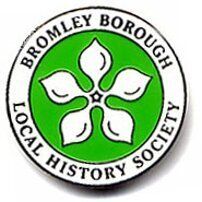A hamlet was in existence at Bromley Common by the 16th century. The diarist John Evelyn was robbed on the common in 1652, when his assailants jumped out from behind a large oak tree.
Enclosure of the Common’s straggling 300 acres began in 1764 and the Pye House, later the Crown public house (it was later rebuilt on the opposite side of the road and is now a Toby Carvery), opened the following year. The Rookery and Oakley House were the most substantial mansions built on the edge of the common in the 18th century. The latter became the home of Captain (and afterwards Admiral) Sir William Cornwallis.
Following the second stage of the Common’s enclosure in 1821, villas were built on Hastings Road, with a row of cottages on what is now Oakley Road. The village had expanded significantly by the late 1830s and two of the cottages were converted into an infants’ school, while Holy Trinity church was built in an economical style known as Commissioners’ Gothic. A purpose-built school opened beside the church in 1847.
To the north, the area around Chatterton Road was nicknamed ‘the building field’ in the 1870s, when it rapidly filled with terraced cottages, accompanied by shops and a large public house, now the Chatterton Arms, at one time called the Hit and Miss. The 1880s saw the opening of a hospital for infectious diseases, the improvement of Holy Trinity and the building of St Luke’s church , although its tower was not completed until 1910. Most of these houses were built to accommodate the workers required by the railways and service workers, Chatterton Road was the centre of the laundry industry. The roads appear to be names after Walpole Villa, taking the poetry theme, such as Chatterton Road, Pope Road, Bloomfield Road, while others take their names from then current icons such as Victoria Road, Albert Road and Balfour Road.
A Tillings bus garage opened in 1924 and another phase of expansion later in the decade necessitated more school building. To the west, the Norman family preserved the grounds of the Rookery until the army took over the house during the Second World War.
The Rookery burned down in 1946 while still under military occupation, after which green-belt legislation prevented development and ensured that much of this area has remained open space. Bromley technical college was built on the Rookery’s site in 1965 and this has since become the main campus of Bromley college of further and higher education. The isolation hospital, later a geriatric care facility, was demolished and replaced by housing in the mid-1980s. Oakley House has become a Masonic hall that also serves as a conference, banqueting and wedding venue.
Across the road from the college, Asprey Homes and Barratt subsidiary Ward Homes laid out Trinity Village from 2010. The development replaced the Blue Circle (cement company) sports ground and was vainly opposed by Bromley council.
